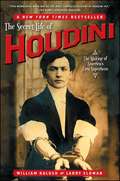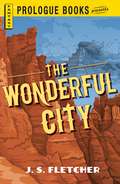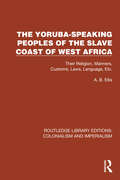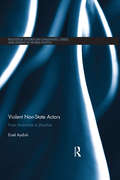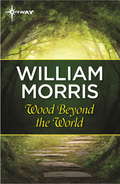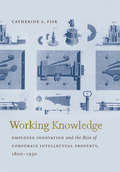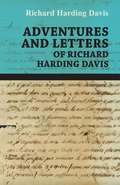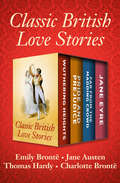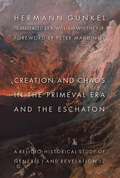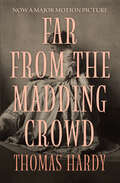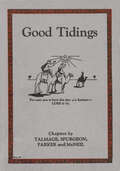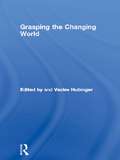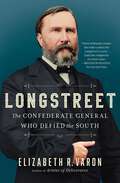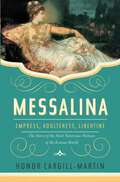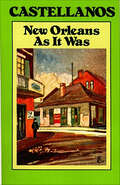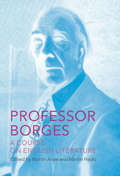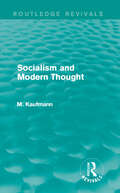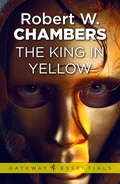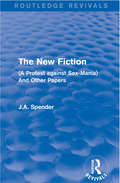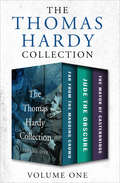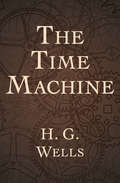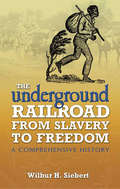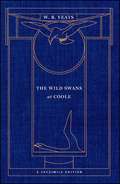- Table View
- List View
The Secret Life of Houdini
by William Kalush Larry SlomanHandcuff King. Escape Artist. International Superstar.Since his death eighty-eight years ago, Harry Houdini's life has been chronicled in books, in film, and on television. Now, in this groundbreaking biography, renowned magic expert William Kalush and bestselling writer Larry Sloman team up to find the man behind the myth. Drawing from millions of pages of research, they describe in vivid detail the passions that drove Houdini to perform ever-more-dangerous feats, his secret life as a spy, and a pernicious plot to subvert his legacy.The Secret Life of Houdini traces the arc of the master magician's life from desperate poverty to worldwide fame--his legacy later threatened by a group of fanatical Spiritualists led by esteemed British author Sir Arthur Conan Doyle. Initiating the reader along the way into the arcane world of professional magic, Kalush and Sloman decode a life based on deception, providing an intimate and riveting portrayal of Houdini, the man and the legend.cian traveled to Germany and Russia and routinely reported his findings. After World War I was successfully concluded, Houdini embarked on a battle of his own. He created a group of disguised field operatives to infiltrate the seamy world of fake spirit mediums. In doing so, Houdini triggered the wrath of fanatical Spiritualists, led by the esteemed British author Sir Arthur Conan Doyle. Death threats became an everyday occurrence, but the group would pose an even greater danger to Houdini's legacy. Rigorously researched, and as exciting as a good thriller, The Secret Life of Houdini traces the arc of the master magician's life from desperate poverty to worldwide legend, initiating the reader along the way into the arcane world of professional magic. In this remarkable book, Kalush and Sloman decode a life based on deception, providing an intimate and riveting portrayal of Houdini, the man and the legend.
The Secret Life of Houdini
by William Kalush Larry SlomanHandcuff King. Escape Artist. International Superstar.Since his death eighty-eight years ago, Harry Houdini's life has been chronicled in books, in film, and on television. Now, in this groundbreaking biography, renowned magic expert William Kalush and bestselling writer Larry Sloman team up to find the man behind the myth. Drawing from millions of pages of research, they describe in vivid detail the passions that drove Houdini to perform ever-more-dangerous feats, his secret life as a spy, and a pernicious plot to subvert his legacy.The Secret Life of Houdini traces the arc of the master magician's life from desperate poverty to worldwide fame--his legacy later threatened by a group of fanatical Spiritualists led by esteemed British author Sir Arthur Conan Doyle. Initiating the reader along the way into the arcane world of professional magic, Kalush and Sloman decode a life based on deception, providing an intimate and riveting portrayal of Houdini, the man and the legend.cian traveled to Germany and Russia and routinely reported his findings. After World War I was successfully concluded, Houdini embarked on a battle of his own. He created a group of disguised field operatives to infiltrate the seamy world of fake spirit mediums. In doing so, Houdini triggered the wrath of fanatical Spiritualists, led by the esteemed British author Sir Arthur Conan Doyle. Death threats became an everyday occurrence, but the group would pose an even greater danger to Houdini's legacy. Rigorously researched, and as exciting as a good thriller, The Secret Life of Houdini traces the arc of the master magician's life from desperate poverty to worldwide legend, initiating the reader along the way into the arcane world of professional magic. In this remarkable book, Kalush and Sloman decode a life based on deception, providing an intimate and riveting portrayal of Houdini, the man and the legend.
The Wonderful City (Prologue Crime)
by J. S. FletcherJ. S. Fletcher (b. 1863, d. 1935) was a prolific British author and journalist. He wrote over 230 titles, both fiction and non fiction. He was one of foremost writers of detective fiction during the Golden Age of murder mystery novels.
The Yoruba-Speaking Peoples of the Slave Coast of West Africa: Their Religion, Manners, Customs, Laws, Language, Etc (Routledge Library Editions: Colonialism and Imperialism #51)
by A.B. EllisThe Yoruba-Speaking Peoples of the Slave Coast of West Africa (1894) is an important work of in-depth research into one of the principal indigenous communities of West Africa. The territory of the Yoruba peoples extends over the southern parts of western Nigeria and eastern Dahomey, and this book examines their religion, customs, laws and language, and contains an extensive appendix comparing the Tshi (Oji), Gã, Ewe and Yoruba languages.
Violent Non-State Actors: From Anarchists to Jihadists (Routledge Studies on Challenges, Crises and Dissent in World Politics)
by Ersel AydinliGiven the importance of violent non-state actors (VNSA) and their evolving role in global politics, dynamic frameworks of analysis are needed both to trace historical trajectories in the evolution of violent non-state actorness and to identify emerging patterns by examining modern day cases. This book examines the defining characteristics and evolutionary dynamics of VNSAs, and introduces a framework based on their autonomy, representation and influence providing a comparative analysis of the late 19th and early 20th centuries’ Anarchist movement and the modern-day Jihadist network. It explores the distinct characteristics of the Anarchists and Jihadists as VNSAs with global potential, not just describing them, but also seeking to understand what they are instances of. With a longitudinal analysis, the book also considers the types of changes that have occurred in the past 150 years and the possible role VNSAs may play in current and future power polity shifts away from states toward non-state actors. It concludes with both theoretical implications for the study of non-state actors and transnational relations, and practical implications for government agencies or private groups tasked with finding ways of countering such violent non-state actors. This important book will be of interest to students and scholars of international relations, political science, and terrorism/security studies. It will also be of interest to practitioners in the security services including think-tank analysts and government security analysts.
Wood Beyond the World: Large Print
by William MorrisThe hero of this romance is named Golden Walter, son of Bartholomew Golden, a great merchant in the town of Langton on Holm. Tired of his mundane life, Walter sets out on a sea voyage, anxious to see and learn more of the outside world, eventually winning for himself the kingdom of Stark-Wall and the love of a beautiful maiden.
Working Knowledge: Employee Innovation and the Rise of Corporate Intellectual Property, 1800-1930
by Catherine L. FiskSkilled workers of the early nineteenth century enjoyed a degree of professional independence because workplace knowledge and technical skill were their "property," or at least their attribute. In most sectors of today's economy, however, it is a foundational and widely accepted truth that businesses retain legal ownership of employee-generated intellectual property. InWorking Knowledge, Catherine Fisk chronicles the legal and social transformations that led to the transfer of ownership of employee innovation from labor to management. This deeply contested development was won at the expense of workers' entrepreneurial independence and ultimately, Fisk argues, economic democracy. By reviewing judicial decisions and legal scholarship on all aspects of employee-generated intellectual property and combing the archives of major nineteenth-century intellectual property-producing companies--including DuPont, Rand McNally, and the American Tobacco Company--Fisk makes a highly technical area of law accessible to general readers while also addressing scholarly deficiencies in the histories of labor, intellectual property, and the business of technology.
Adventures and Letters of Richard Harding Davis
by Richard Harding DavisThis early work by Richard Harding Davis was originally published in the early 20th century and we are now republishing it with a brand new introductory biography. <P> <P> 'Adventures and Letters of Richard Harding Davis' is a collection of writings spanning his entire career and includes his articles from the Congo, Japan, London, and much more. Davis attended Lehigh University and Johns Hopkins University, but was asked to leave both due to neglecting his studies in favour socialising. During the Second Boer War in South Africa, Davis was a leading correspondent of the conflict. He saw the war first-hand from both parties perspectives and documented it in his publication 'With Both Armies' (1900). He wrote widely from locations such as the Caribbean, Central America, and even from the perspective of the Japanese forces during the Russo-Japanese War. Davis died following a heart attack on 11th April, 1916, at the age of 51.
Classic British Love Stories: Wuthering Heights, Pride and Prejudice, Far from the Madding Crowd, and Jane Eyre
by Thomas Hardy Jane Austen Charlotte Brontë Emily BrontëThese heart-soaring tales of romance and tragedy are widely considered four of the finest novels in English literature. Wuthering Heights is an immortal story of love and obsession on the stormy Yorkshire moors. The fate of the Earnshaw family is forever changed when they adopt a dark-skinned orphan boy named Heathcliff. As the years pass, Heathcliff and young Catherine Earnshaw fall deeply in love, but their passion cannot survive the pressures of society and the black force of jealousy. Driven away by a broken heart, Heathcliff leaves Wuthering Heights only to return years later, bent on the cruelest kind of revenge. Pride and Prejudice is a classic comedy of manners and an enduring romance. In a remote Hertfordshire village, Jane Bennet attracts the attentions of a young gentleman named Charles Bingley, but his good friend Mr. Darcy disapproves of the match. Elizabeth Bennet, always eager to defend her sweet-natured sister, detests the prideful Mr. Darcy, even when he asks for her hand in marriage. But when a chance encounter reunites the combative couple, Elizabeth realizes that her prejudices have been standing in the way of her heart's true desire. Far from the Madding Crowd is a love story wrapped in the cloak of tragedy. Shortly after the spirited, impulsive, and beautiful Bathsheba Everdene arrives in Wessex, she saves the life of a young shepherd. When he asks for her hand in marriage, Bathsheba refuses; she cannot sacrifice her independence for a man she does not love. Years later and now a wealthy woman, Bathsheba falls for a dashing sergeant and makes a fateful decision that brings long-buried secrets to the fore. Jane Eyre shines a brilliant light into the dark corners of Victorian society. Born to a good family but with no wealth of her own, Jane Eyre lives first with her uncle and then in a punitive boarding school for girls. When she becomes governess of Thornfield Hall, the young orphan feels at home for the first time in her life. She soon falls in love with Edward Rochester, master of the house, but just when it seems her luck has finally changed, Jane discovers the secret of the attic--a terrible revelation that threatens to destroy her dreams of happiness forever. This ebook has been professionally proofread to ensure accuracy and readability on all devices.
Creation and Chaos in the Primeval Era and the Eschaton: A Religio-Historical Study of Genesis 1 and Revelation 12 (The Biblical Resource Series)
by Hermann GunkelForeword by Peter MachinistHermann Gunkel's groundbreaking Schöpfung und Chaos, originally published in German in 1895, is here translated in its entirety into English for the first time. Even though available only in German, this work by Gunkel has had a profound influence on modern biblical scholarship.Discovering a number of parallels between the biblical creation accounts and a Babylonian creation account, the Enuma Elish, Gunkel argues that ancient Babylonian traditions shaped the Hebrew people's perceptions both of God's creative activity at the beginning of time and of God's re-creative activity at the end of time.Including illuminating introductory pieces by eminent scholar Peter Machinist and by translator K. William Whitney, Gunkel's Creation and Chaos will appeal to serious students and scholars in the area of biblical studies.
Far from the Madding Crowd: The 1874 Thomas Hardy's Fourth Novel (Ubspd's World Classics Ser.)
by Thomas HardyThomas Hardy&’s classic tale of a woman brave enough to defy convention: Now a major motion picture starring Carey Mulligan Spirited, impulsive, and beautiful, Bathsheba Everdene arrives in Wessex to live with her aunt. She strikes up a friendship with a neighbor, Gabriel Oak, and even saves the young shepherd&’s life. But when he responds by asking for her hand in marriage, she refuses. She cannot sacrifice her independence for a man she does not love. Years later, misfortune has bankrupted Gabriel, while Bathsheba has inherited her uncle&’s estate and is now a wealthy woman. She hires Gabriel as a shepherd but is interested in William Boldwood, a prosperous farmer whose reticence inspires her to playfully send him a valentine. William, like Gabriel before him, quickly falls in love with Bathsheba and proposes. But it is the dashing Sergeant Francis Troy who finally wins her heart. Despite the warnings of her first two suitors, Bathsheba accepts his proposal—a decision that brings long-buried secrets to the fore and leaves everything for which she has fought so hard hanging in the balance. Published a century and a half ago, Far from the Madding Crowd was Thomas Hardy&’s first major success and introduced the themes he would continue to explore for the rest of his life. A love story wrapped in the cloak of tragedy, it is widely considered to be one of the finest novels of the nineteenth century. This ebook has been professionally proofread to ensure accuracy and readability on all devices.
Good Tidings (Colportage Library #19)
by John McNeill T. DeWitt Talmage Charles H Spurgeon Joseph ParkerAccording to the prophecies, Jesus would be born in Bethlehem. And he was! In Good Tidings, four classic authors detail the night the world's Savior was born, acclimating you historically to the time before and after the joyous event.How should this needy world—and you—respond to the Savior's birth? With awe, joy, and belief.
Good Tidings (Colportage Library #19)
by John McNeill T. DeWitt Talmage Charles H Spurgeon Joseph ParkerAccording to the prophecies, Jesus would be born in Bethlehem. And he was! In Good Tidings, four classic authors detail the night the world's Savior was born, acclimating you historically to the time before and after the joyous event.How should this needy world—and you—respond to the Savior's birth? With awe, joy, and belief.
Grasping the Changing World (European Association of Social Anthropologists)
by Václav HubingerAs different societies merge into one global society and face the concomitant crisis of identity, of purpose and interest, social anthropology urgently needs to bring its methodology up to date: new methods are needed to analyse, compare and understand different cultures across space and time.Grasping the Changing World collects papers read at the second biannual EASA conference in Prague in 1992. The conference took place in an extraordinary 'postmodern' setting. With the fall of communist regimes in Central and Eastern Europe old certainties and time-honoured concepts had become obsolete; at the same time, anthropology too was in upheaval, and long-established patterns of thought seemed inadequate to grasp the rapidly changing realities. These doubts and tensions are reflected in this collection.The first half of Grasping the Changing World focuses on ways of conceptualising, modelling and perceiving the present, while the second half reassesses the theoretical strength or otherwise of social anthropology as a modern science. Combining methodological rigour and originality, this collection will make invaluable reading for all students of social anthropology, sociology and politics and its methodology as it is applied to the comparison and understanding of societies across space and time.
Longstreet: The Confederate General Who Defied the South
by Elizabeth VaronWinner, American Battlefield Trust Prize for History Winner, Library of Virginia Literary Award for Nonfiction Finalist, Los Angeles Times Book Prize for Biography A &“compelling portrait&” (Jon Meacham, Pulitzer Prize–winning author) of the controversial Confederate general who later embraced Reconstruction and became an outcast in the South. It was the most remarkable political about-face in American history. During the Civil War, General James Longstreet fought tenaciously for the Confederacy. He was alongside Lee at Gettysburg (and counseled him not to order the ill-fated attacks on entrenched Union forces there). He won a major Confederate victory at Chickamauga and was seriously wounded during a later battle. After the war, Longstreet moved to New Orleans, where he dramatically changed course. He supported Black voting and joined the newly elected, integrated postwar government in Louisiana. When white supremacists took up arms to oust that government, Longstreet, leading the interracial state militia, did battle against former Confederates. His defiance ignited a firestorm of controversy, as white Southerners branded him a race traitor and blamed him retroactively for the South&’s defeat in the Civil War. Although he was one of the highest-ranking Confederate generals, Longstreet has never been commemorated with statues or other memorials in the South because of his postwar actions in rejecting the Lost Cause mythology and urging racial reconciliation. He is being discovered in the new age of racial reckoning as &“one of the most enduringly relevant voices in American history&” (The Wall Street Journal). This is the first authoritative biography in decades and the first that &“brilliantly creates the wider context for Longstreet&’s career&” (The New York Times).
Messalina: Empress, Adulteress, Libertine: The Story of the Most Notorious Woman of the Roman World
by Honor Cargill-MartinThe shocking and scandalous story of Messalina—the third wife of Emperor Claudius—one of the most controversial women to have inhabited the Roman world.The lubricious image of the Empress Messalina as a ruthless, predatory, and sexually insatiable schemer—derived from the work of male historians such as Tacitus and Suetonius—has taken deep root in the Western imagination. Here, the classicist Honor Cargill-Martin puts this traditional narrative of Messalina to the test. She looks first at Messalina's life as it is recounted in the primary sources, before using material and circumstantial evidence to reconstruct each aspect of Messalina's character: politician, wife, adulteress, and prostitute. Finally, she explores how posterity has memorialized Messalina, whether as artist's muse, epitome of depraved pagan womanhood, or as libertine icon portrayed in literature and film. Cargill-Martin sets out not to entirely rewrite Messalina's history, or to salvage her reputation, but to look at her life in the context of her time and to reclaim the humanity of a life story previously defined by currents of high politics and patriarchy.
New Orleans as It Was
by Henry C. CastellanosMore than a century after its publication, New Orleans As It Was still sizzles with all the salient episodes that constitute thecharm of this unique metropolis of the South. Author Henry C. Castellanos notes that some of the incidents described inthis classic volume are so startling, romantic and improbable that, "were they not authenticated by undeniable proof, they might be taken as the vaporings of an exuberant imagination."First published in 1895, New Orleans As It Was vividly records episodes of antebellum Louisiana life. Castellanos believed he was living in a time of important transition�that he was a connecting link between generations. His book written during a period of convalescence�offers accounts of events that he witnessed, as well those unwritten tales he remembered hearing in his boyhood days from his mother and grandmother. Thus, facts, events, and personalities of Castellanos' tales were drawn not only from old records and archives, but from oral recitals and traditions. New Orleans As It Was includes such diverse elements of the Crescent City's heritage as the dramatic and often tragic reminiscences of the Old Parish Prison and successful transition into a new era by Mayor Louis Phillippe Roffignac. This volume is a delightful tribute to the New Orleans history not found in textbooks. Henry C. Castellanos planned on writing a series of books on the unwritten history of Louisiana. Because of ill health, however, he was only able to complete New Orleans As It Was , which endures today as a testament to his genius.
Professor Borges: A Course on English Literature
by Jorge Luis Borges Katherine Silver Martín Hadis Martín AriasIn English at last, Borges's erudite and entertaining lectures on English literature from Beowulf to Oscar Wilde Writing for Harper's Magazine, Edgardo Krebs describes Professor Borges:"A compilation of the twenty-five lectures Borges gave in 1966 at the University of Buenos Aires, where he taught English literature. Starting with the Vikings' kennings and Beowulf and ending with Stevenson and Oscar Wilde, the book traverses a landscape of 'precursors,'cross-cultural borrowings, and genres of expression, all connected by Borges into a vast interpretive web. This is the most surprising and useful of Borges's works to have appeared posthumously." Borges takes us on a startling, idiosyncratic, fresh, and highly opinionated tour of English literature, weaving together countless cultural traditions of the last three thousand years. Borges's lectures -- delivered extempore by a man of extraordinary erudition -- bring the canon to remarkably vivid life. Now translated into English for the first time, these lectures are accompanied by extensive and informative notes by the Borges scholars Martín Arias and Martín Hadis.
Socialism and Modern Thought (Routledge Revivals)
by M. KaufmannOriginally published in 1895, this title provides fascinating insights into the development of socialism in the decades prior to the explosion of 20th century socialist revolutions. Kaufmann examines the influences of Christian ideas and European society on socialism to give a fuller picture of the movement at the turn of the century as well as offers his predictions for the future of socialism in Europe. This title is ideal for students of sociology and history, particularly students interested in the development of modern intellectual movements.
The King in Yellow
by Robert ChambersA central influence on HP Lovecraft and countless other authors, including Neil Gaiman and Grant Morrison, THE KING IN YELLOW is finding new fame as a vital element of HBO's hit series TRUE DETECTIVE, starring Woody Harrelson and Matthew McConaughey. Presented here with a short story by Ambrose Bierce, AN INHABITANT OF CARCOSA, which was a direct influence on this collection, this is a perfect read for fans of classic horror and fantasy.
The New Fiction: (A Protest against Sex-Mania) And Other Papers (Routledge Revivals)
by J.A. SpenderThis collection of essays attempts to analyse common assumptions about art, literature and criticism at the time of publication in 1895. Taking the position of ‘a Philistine’ , Spender argues against the ‘new’ art and fiction and encourages the average member of the public to state their opinion and give validation that the average view is just as worthy as the ‘new’ criticism which tended toward superiority. This title will be of interest to students of Literature, Art and Art History.
The Thomas Hardy Collection Volume One: Far from the Madding Crowd, Jude the Obscure, and The Mayor of Casterbridge
by Thomas HardyThree classics of the Victorian era from the great novelist. This volume includes three iconic novels by the author known for chronicling nineteenth-century English society. Far from the Madding Crowd: A tale of love, tragedy, and a woman brave enough to defy convention. Jude the Obscure: A young stonemason who had aspired to a career in academia finds himself trapped in an unhappy marriage in this novel of passion and heartbreak. The Mayor of Casterbridge: A wealthy mayor harbors a terrible secret in this story of addiction, love, and regret.
The Time Machine: 30 Books And Response Journal: Literary Touchstone Classic
by H. G. WellsThe book that introduced the world to time travel In H. G. Wells&’s immortal novella, an unnamed Time Traveller builds a machine that hurtles him to the year 802,701 AD. He discovers a world divided into two species: the peaceful Eloi, who live in colossal, crumbling buildings and are childlike in size and demeanor, and the hulking Morlocks—pale, simian creatures who dwell below ground and prey on their terrestrial counterparts. When his time machine is stolen, the Traveller must outwit the Morlocks in order to retrieve it, escaping their clutches by skipping like a stone across the surface of time. On a frozen red beach thirty million years in the future, he bears witness to the planet&’s terrible last days. The first of H. G. Wells&’s &“scientific romances,&” The Time Machine is a thrilling tale of adventure, and an unsettling thought experiment on the nature of progress and the transience of humankind. Its central conceit has inspired countless writers, artists, and filmmakers, and is undoubtedly one of the greatest inventions in modern literature. This ebook has been professionally proofread to ensure accuracy and readability on all devices.
The Underground Railroad from Slavery to Freedom: A Comprehensive History (African American)
by Wilbur H. SiebertFirst published in 1898, this comprehensive history was the first documented survey of a system that helped fugitive slaves escape from areas in the antebellum South to regions as far north as Canada. Comprising fifty years of research, the text includes interviews and excerpts from diaries, letters, biographies, memoirs, speeches, and a large number of other firsthand accounts. Together, they shed much light on the origins of a system that provided aid to runaway slaves, including the degree of formal organization within the movement, methods of procedure, geographical range, leadership roles, the effectiveness of Canadian settlements, and the attitudes of courts and communities toward former slaves.In his introduction to Professor Siebert's book, historian Albert Bushnell Hart lauds the author for having "rescued and put on record events which in a few years will have ceased to be in the memory of living men. [Siebert] has done for the history of slavery what the students of ballad and folk-lore have done for literature; he has collected perishing materials."Invaluable for its unbiased, literate treatment, this carefully researched study will be an excellent resource for instructors and students of African-American history, and engrossing literature for readers interested in the plight of fugitive slaves in the pre-Civil War era.
The Wild Swans at Coole: A Facsimile Edition (Yeats Facsimile Edition)
by George Bornstein William Butler YeatsA stunning facsimile of the 1919 first edition of William Butler Yeats’s The Wild Swans at Coole: an elegant volume showcasing these poems as they would have first been read and a complement to facsimile editions The Winding Stair and The Tower.Published in 1919 during W.B. Yeats’s “middle stage” and composed of poems written during World War I, The Wild Swans at Coole is contemplative and elegiac. This collection captures Yeats at a time when he was looking back on his life, coming to terms with the realities of modern war, reflecting on lost love, and defining his place in the world as a poet. It features forty poems, among them “The Fisherman,” “In Memory of Major Robert Gregory,” “The Wild Swans at Coole,” and “On Being Asked for a War Poem.” This facsimile of the original 1919 edition presents the reader with the work in its original form, with handsome old fashioned type, how readers and Yeats himself would have seen it in the early twentieth century. A great gift book and collector’s item, The Wild Swans at Coole also includes an Introduction and notes by esteemed Yeats scholar George Bornstein.
